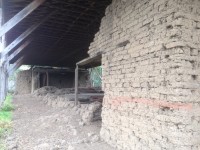Last week I addressed the unofficial sister-city relationship between Sonoma and Benicia. This week I do the same with Napa Valley. In my twenty years living in Sonoma Valley I have heard about a good healthy rivalry with our neighbor to the east. Though geographically separated, the fertile Napa Valley was an ideal location to support the early development of the greatest and most historically significant city in California, Sonoma.
Father Altamira surveyed the North Bay for suitable sites to develop the 21st mission and as history would have it, chose the location here in town in 1823. During his search, he traveled through Petaluma, Napa and Suisun. Napa’s fertile valley was recognized by the padres and was also a key area to obtain Native peoples, specifically the Patwin and the Wappo, to support the Mission.
The earliest Euro-American settler to the Napa Valley was George Yount. In early 1835 he climbed Mt. St. Helena and the beautiful view of the region unfolded before him. Yount stated, “In such a place I should love to clear the land and make my home; in such a place I should love to live and die.”
Yount was born in North Carolina in 1794 during George Washington’s second term as President of the United States. He was a member of William Wolfskill’s party from New Mexico and arrived in Mexican California in 1831. Yount grew up in Missouri and fought in the War of 1812 and the Indian Wars. He became a farmer but had a few difficulties with the hoe, seed and sickle, finally making the decision to leave his wife and three children, to become a fur trapper in Santa Fe.
Yount made his way to Sonoma in 1835. Marino Vallejo quickly hired him as a carpenter and within a year was granted Rancho Caymus. Yount did build a home in the Napa Valley at the current location of Yountville, fulfilling a part of his dream conceived on the pinnacle of Mt. St. Helena. He also built a block-house and grist-mill. Rancho La Jota, just north of Caymus, was granted to him in 1843, where he constructed a saw-mill.
Settlers, primarily immigrants pursuing agricultural activities, arrived in the Valley. The hide and tallow industry in early California was northern California’s first and most important of the area’s economic pursuits. All of our hills in both Napa and Sonoma counties were dotted with thousands of cattle.
Between 1841 and 1845 two significant covered wagon parties entered California, many making their way to settle in northern Napa Valley. The Bidwell-Bartelson and Grigsby-Ide party brought more than just settlers into the region, but future bear-flaggers. That is of course another story.
Salvador Vallejo, was granted Rancho Napa in 1838 and later Rancho Yajome, by his older brother Mariano. Salvador was appointed Captain of the militia at Sonoma and in 1863 was commissioned as a Major in the Union Army. Salvador, no stranger to military campaigns against Native populations, ironically organized the First Battalion of Native Cavalry. When he resigned his commission in 1865, he returned to his ranch in Napa.
In 1855, a town near Yount’s home was laid out and named Sebastopol. Evidently, another town in Sonoma County laid claims to that title, and in 1867 after his death, the town was renamed to Yountville in his honor. Yount died on his property, thus fulfilling the second part of his Mt. St. Helena dream. Though rivals in the wine industry, our valley’s are forever linked in history, making Napa and Sonoma true, but unofficial sister-cities.

